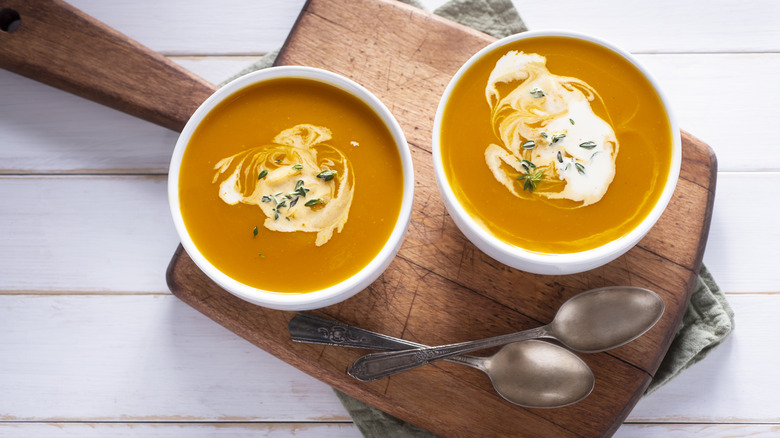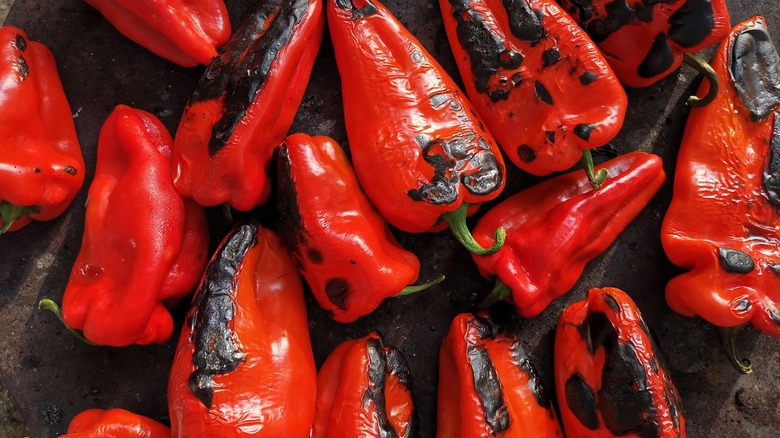Roasted Red Peppers Add Subtle Sweetness To Butternut Squash Soup
Warm, comforting soups featuring seasonal ingredients hit the spot every time in the colder months. And because butternut squash is so mildly flavored and creamy, it's a highly adaptable main ingredient that can be pointed in whichever flavor direction you'd prefer. Coconut milk, lemongrass paste, and turmeric can give a Thai-style spin, a swirl of Greek yogurt can add richness, or the inclusion of red peppers can give your meal a deliciously subtle sweetness.
Red peppers are the sweetest of all bell peppers, so you'll want to choose these over orange, green, or yellow varieties. They won't bring an unwelcome flavor to the notes already in butternut squash soup, as the squash already develops a slightly sugary taste as it caramelizes when roasted. But among all the savory ingredients in this dish — namely the onion or shallot, garlic, seasonings, and herbs — the light sweetness of the red peppers provides the perfect amount of balance without overwhelming the soup. Plus, fall can be an ideal time to harvest these peppers, so you're still making the most of seasonal produce.
How to add roasted red peppers to butternut squash soup
There are two different types of red peppers you can start with: fresh and roasted. Roasting the peppers yourself adds a smoky depth of flavor and a smoother consistency to your soup — but you can also buy a jar, which typically comes with the peppers pre-charred and peeled. If you go with the latter, however, take note of the liquid they're packed in, which can range from salt water to olive oil to infused oil.
Both options are easy to incorporate into your butternut squash soup. If you start with fresh peppers, simply roast them along with your squash, as the diced produce should both be done after about half an hour at 400 degrees Fahrenheit. Then you can add everything to a blender along with the rest of the soup's ingredients, and go from there. If you used roasted red peppers from a jar, however, you'll want to drain and chop them before dumping them straight into the blender along with everything else. As an alternative, you can place your roasted veggies and other ingredients in a pot on the stove, simmer, and use an immersion blender to get the texture you want. Any of these methods will prove to be an easy, delicious, and subtle way to upgrade this classic fall dish.

